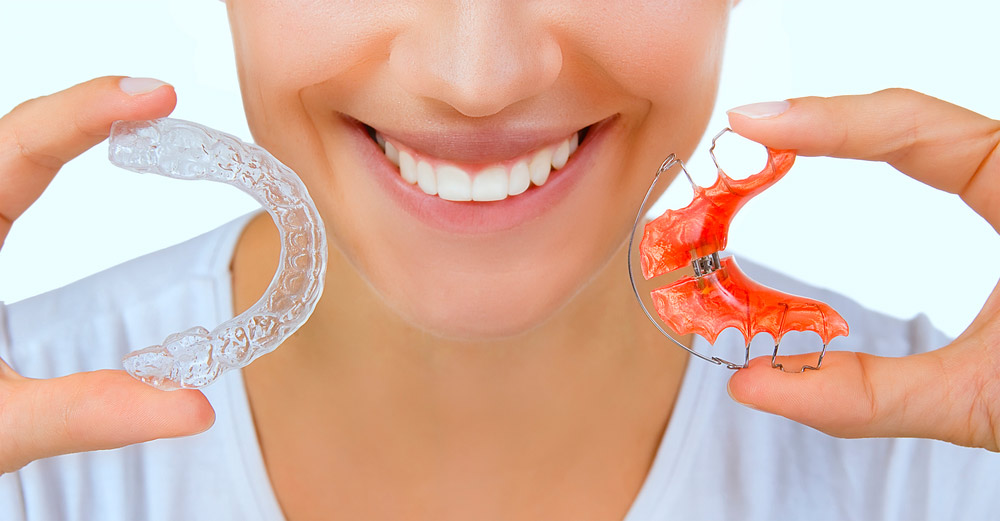Orthodontic treatment is something many of us had as teenagers and then expected our smile to go the distance. However, in some cases, we may need to consider this treatment again later in life. There are a lot of reasons your teeth may have shifted over time and if your smile has become crooked or your teeth are uneven again, you may need to have orthodontic treatment for a second time.
Causes of orthodontics for a second time
Teeth will naturally shift and change their position as we age, with varying effects on your smile, but here are some of the most common causes of premature shifting that we see:
-
Not wearing your retainers as recommended
This is the most common cause of teeth shifting their position. When you first had your braces removed or finished your aligner treatment, your orthodontist would have given you strict rules for how to wear and care for your removable plastic retainers to maintain your new smile. Chances are, you forgot their advice or completely ignored it. If that’s the case the natural progression of teeth tending to shift back towards their original positions would have taken affect, causing your teeth to slowly become more crooked over time.
The best way to avoid this is to continue wearing your retainers for as long as it is comfortable to do so. Generally, after the first year, you will be able to reduce your retainer wear down to only a few nights a week, making it less impactful on your daily routine.
Having small permanent or “bonded” wire retainers placed on the inside of the front teeth is one good way to avoid having to remember to wear your removable plastic retainers at night for many years. Bonded retainers will generally ensure that the teeth stay straight over the long term but they do require regular maintenance and should not be considered as a 100% guarantee for perfect tooth alignment.
-
Wisdom teeth
When you start to feel the ache of your wisdom teeth beginning to erupt, it is best to head to your general dentist or orthodontist for an x-ray so that they can assess how these troublesome teeth might affect your smile. If your mouth doesn’t have enough room for your wisdom teeth to comfortably erupt into position, they may, in a small way, impact on the alignment of the other teeth over the long term.
While not every patient needs to have their wisdom teeth removed or will experience a noticeable shift in the position of their teeth, it is best to consult your orthodontist early to avoid any ill effects as they grow.
-
Developing bad habits
If you develop habits that are bad for your teeth, such as bruxism (chronic grinding of your teeth) or clenching due to stress, this can put pressure on your teeth and gums causing them to shift their position faster.
To help break these habits, an orthodontist may be able to provide you with advice or an orthodontic device that discourages the action that is having a negative effect.
-
Accidents, trauma and tooth loss
Losing a tooth in an accident or as a result of tooth decay, infection, cracks or gum disease might not seem like a big deal, but having a gap will result in the surrounding teeth moving into space. Also, any trauma to your front teeth can have a significant affect on the look of your teeth and smile.
An orthodontist can advise on the best thing to do for your particular circumstances, which may require a replacement false tooth, a plate from your dentist or a permanent space maintainer.
-
Poor oral hygiene/Gum Disease
If you didn’t take adequate care of your teeth after having your braces removed, then you’ve probably done a lot of damage to your teeth and gums. Whether you’re constantly needing fillings for cavities, have had to have teeth extracted or have compromised the health of your gums, poor oral health can contribute to teeth shifting at a fast rate.
It is important to take good care of your teeth, regardless of the stage of treatment you’re currently at. Brushing, flossing and rinsing with mouthwash will all help improve the health of your teeth and gums. Limiting exposure to sugar, especially in drinks and snacks will reduce the risk of tooth decay.
You should also visit your general dentist every 6-12 months for a check-up, professional tooth cleaning (scaling) and any required routine dental maintenance.

How do you know if you need braces again?
We just talked about what causes orthodontic relapse. But what should you look out for before booking another consultation with your orthodontist after so many years have passed? Some signs that you may need to get braces again include…
- Overcrowding, with teeth shifting back to their original position
- New gaps forming in your teeth where they weren’t after initially completing treatment
- Severe jaw pain or discomfort
- An increase in tooth decay and gum disease caused by shifting teeth

Do I really need to get orthodontic treatment for a second time?
That really is up to you and the decision will probably be based mostly on how you feel about the way your teeth look when you smile. However, if your issues are less with the aesthetic look of your teeth and more related to pain, discomfort or uneven tooth wear, then the additional treatment might be the best option.
Having orthodontics one more time might mean that you’ll only need a short course of treatment with clear aligners or partial braces for a few months to correct minor issues.
How long does it take to get braces a second time around?
When you are getting braces once again, it’s likely that less tooth movements need to take place. This means that treatment time may be shorter than your first round of orthodontic treatment. But this will vary from case to case, and can take anywhere from 3 to 18 months, so it is important to book a consultation with a specialist orthodontist who will discuss the best form of secondary orthodontic treatment for you.

Do braces cost less the second time?
There are no set prices for orthodontic treatment in Australia so it’s almost impossible to know if you will be paying more or less for your treatment a second time. You also need to consider that prices may have changed slightly, since you first completed treatment, and may be using a different form of orthodontic treatment, due to new and more discreet options now available for more minor corrections. If you are considering limited treatment, the cost of this treatment will reduce significantly. There is no harm in getting a free consultation from a specialist orthodontist who will provide an all-inclusive quote to straighten your teeth and align your jaws.
Make an appointment with an orthodontist to ascertain what your options are and what the best course of treatment would be for the health of your smile. You can use this tool to search for a specialist orthodontist near you.










